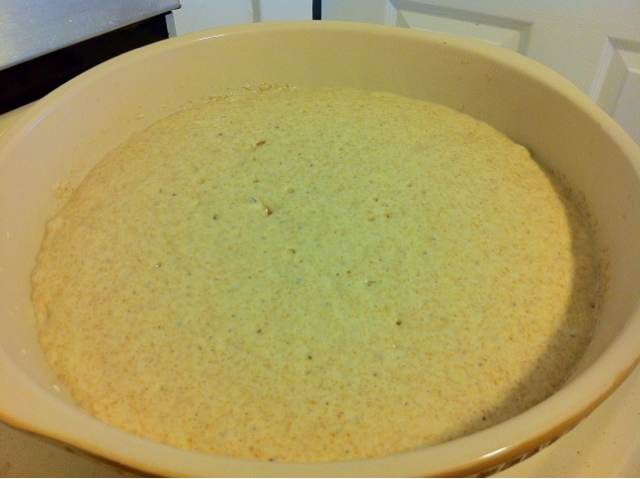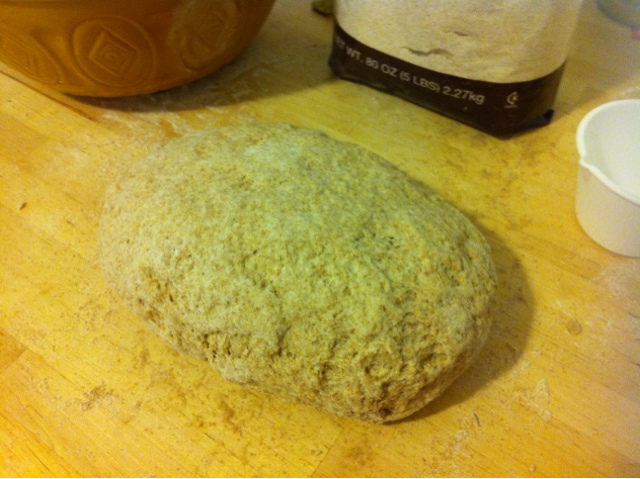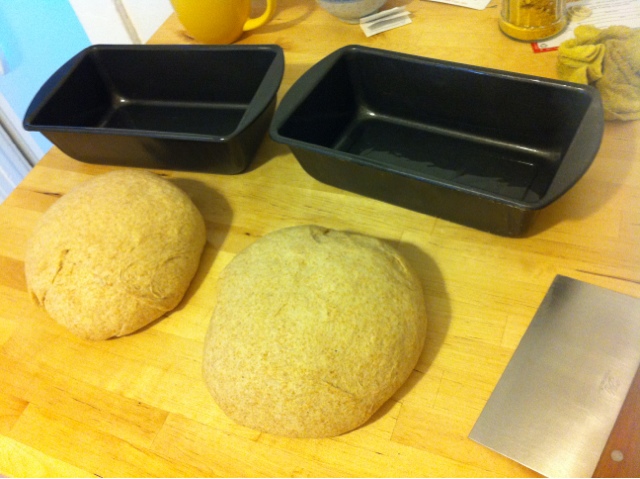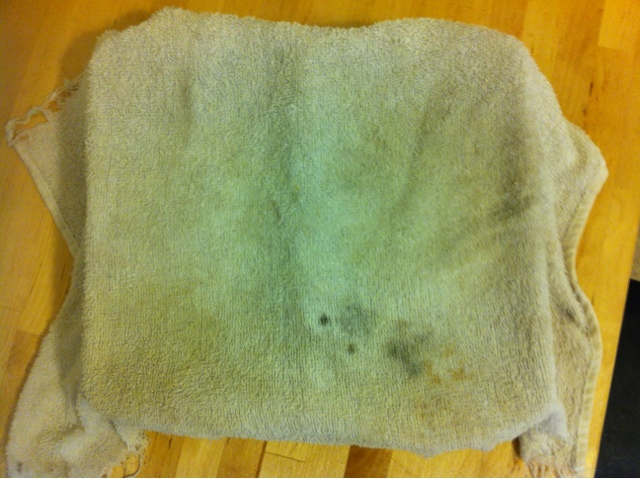Say, what the heck is this doing in Marge's cookbook drawer? Nobody bakes bread any more. Who kneads it? [rimshot]
This basic recipe starts with a "sponge." Hmmm. Why would I start bread with a gnarly sponge, especially one that photographs with this weirdie green hue? It's making me feel ill to look at it.
The dough still photographs green after kneading. Maybe it's because it took a cup and a half more flour this time than the recipe calls for. Maybe whole wheat flour turns you green. Maybe the Wicked Witch of the West was actually vegan and loved to snack on flour late at night, making her highly soluble when that pesky Dorothy showed up with a bucket of water.
Whoa, my questionably tasty bread dough is multiplying like rabbits. Or like cancer. No one should joke about cancer. This is just a very minor, highly curable cancer with nommy side symptoms.
Final rise leaves many questions unanswered. How many pans are under that towel? Can anything worth eating possibly come out from under that grease stained rag? Hey, does the kitchen smell like gas to you, and did the pilot light in the oven go out? (The answer to that last one turned out to be "yes," but we triumphed through the power of internet forums, a long tapered candle, and sheer boldness.)
O well, guess we'll never know.





















